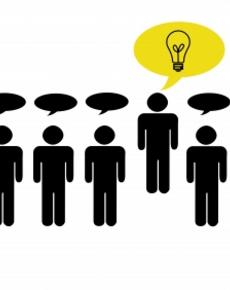
The Responsibility of Government in Building Civic Engagement

We should all see it as part of our civic duty to contribute toward the common good. However, many people do not connect with the governing process in a meaningful way. Perhaps this is where government can do more by further engaging citizens and driving civic awareness.
Fortunately, there are a number of ways, already tested at multiple levels of government, that citizens can interact with public organizations and contribute to improved services for all. Such examples are summarized below, and provide excellent models for government to enhance citizen engagement.
Identifying issues that matter – Defining the problem is just as important as developing a solution. It is easy to jump straight to solutions without properly understanding the problem, and more significantly, understanding which problems matter most. This is where citizen input, particularly via crowdsourcing, or the collection of inputs from large groups of people, can be effective. Examples of issue identification include:
- SeeClickFix – A mobile application where citizens can report non-emergency issues in their cities. Over 2.1 million issues have been fixed as a result.
- We the People – This website allows users to create and/or sign petitions to call on the White House to take action on particular issues. If a petition has 100,000 signatures in 30 days, it is sent to White House for consideration. Since its inception five years ago, millions of Americans have contributed to the site.
- Hack the Pentagon – A hackathon run by the Department of Defense to identify potential vulnerabilities on their websites. 1,410 participants registered for the hackathon and identified 138 unique, legitimate vulnerabilities.
Developing solutions to complex issues – It is amazing what can be achieved when the collective intelligence is leveraged. Experts, both in and out of government, can work together to solve complex issues through a variety of methods such as hackathons, contests, awards, and open data, without physical or geographical limitations. Examples include:
- NYC BigApps – A competition that asked participants to make New York City a better place for all its residents. Selected solutions helped address affordable housing, waste, energy, and public benefits.
- Challenge.gov – A central portal for federal prizes and competitions, which allows citizens to submit solutions. There have been more than 640 competitions, 250,000 participants, and over $220 million in prizes awarded.
- Code for America – A nonprofit that partners with government organizations to redesign public services by bringing together citizen technologists and developers to help their communities.
Delivering improved services – Citizens can act as a natural extension of a government organization, enhancing the services delivered to other citizens through the course of their own experiences or expertise. A few examples of citizens co-delivering government services include:
- MyTSA – An interactive mobile and web application that allows users to post security line wait times keeping other travelers and transportation stakeholders informed and prepared, perhaps also improving the flow of traffic through security lines. This app also provides users with key information in one place like airport status and a list of prohibited items, which could also be leveraged.
- NOAA’s mPING – A mobile application, which allows people to submit a weather observation to the National Severe Storms Laboratory database. NOAA’s National Weather Service uses the information to provide better forecasts and to develop improved radar and forecasting technologies.
- IRS’s Volunteer Income Tax Assistance (VITA) – A program that recruits accounting students, who receive training from the IRS, to assist low-income citizens with preparing their tax returns for free. During the 2015 tax season there were over 90,000 volunteers who helped to prepare 3.7 million tax returns.
There are hundreds of examples of government organizations utilizing citizens to improve outcomes. However, creating these programs is only the first step. Organizations must also consider how they can get the best results, for instance, by targeting the right audience. As Beth Noveck describes, “the key is for government to move from crowdsourcing widely to crowdsourcing wisely.” In addition, once organizations can identify the target contributors, they must determine how best to reach and engage that particular group. Finally, what is done after inputs are received to put those good ideas into action is just as critical as the steps leading up to it.
While citizens find ways to more actively fulfill their civic duty and contribute to the common good, the responsibility of government organizations is to create the environment, means, and awareness of how to do that.
Image courtesy of africa at FreeDigitalPhotos.net



